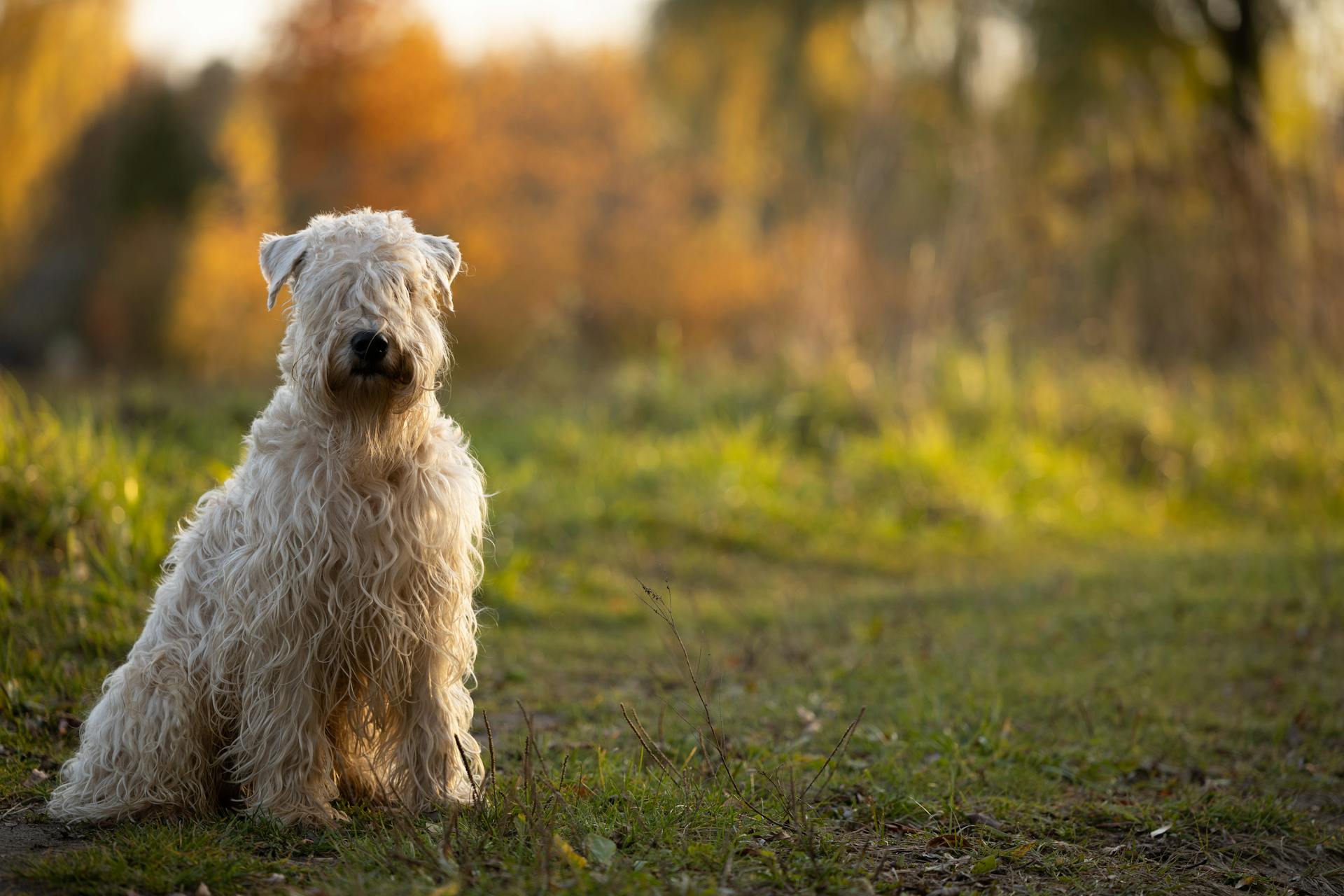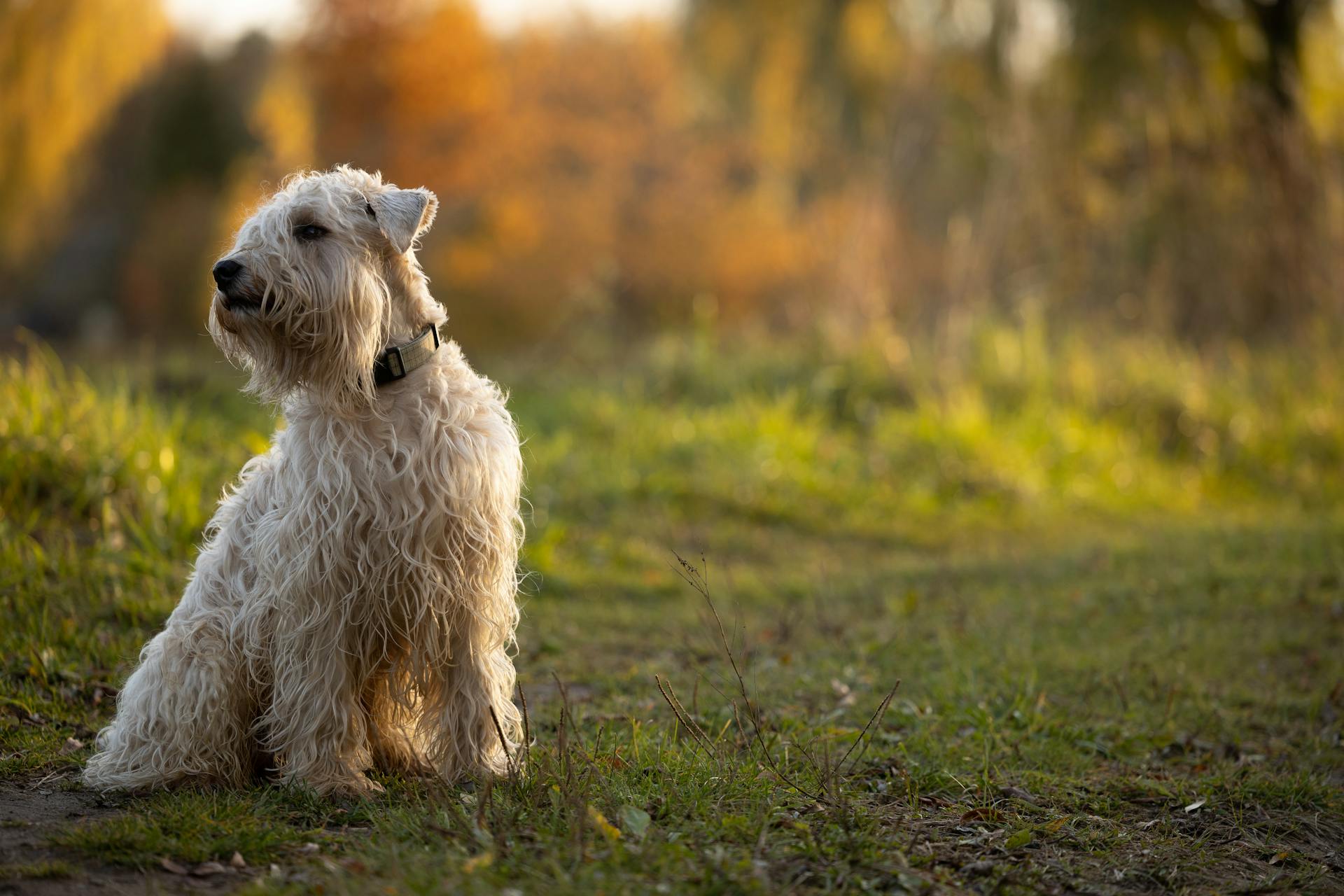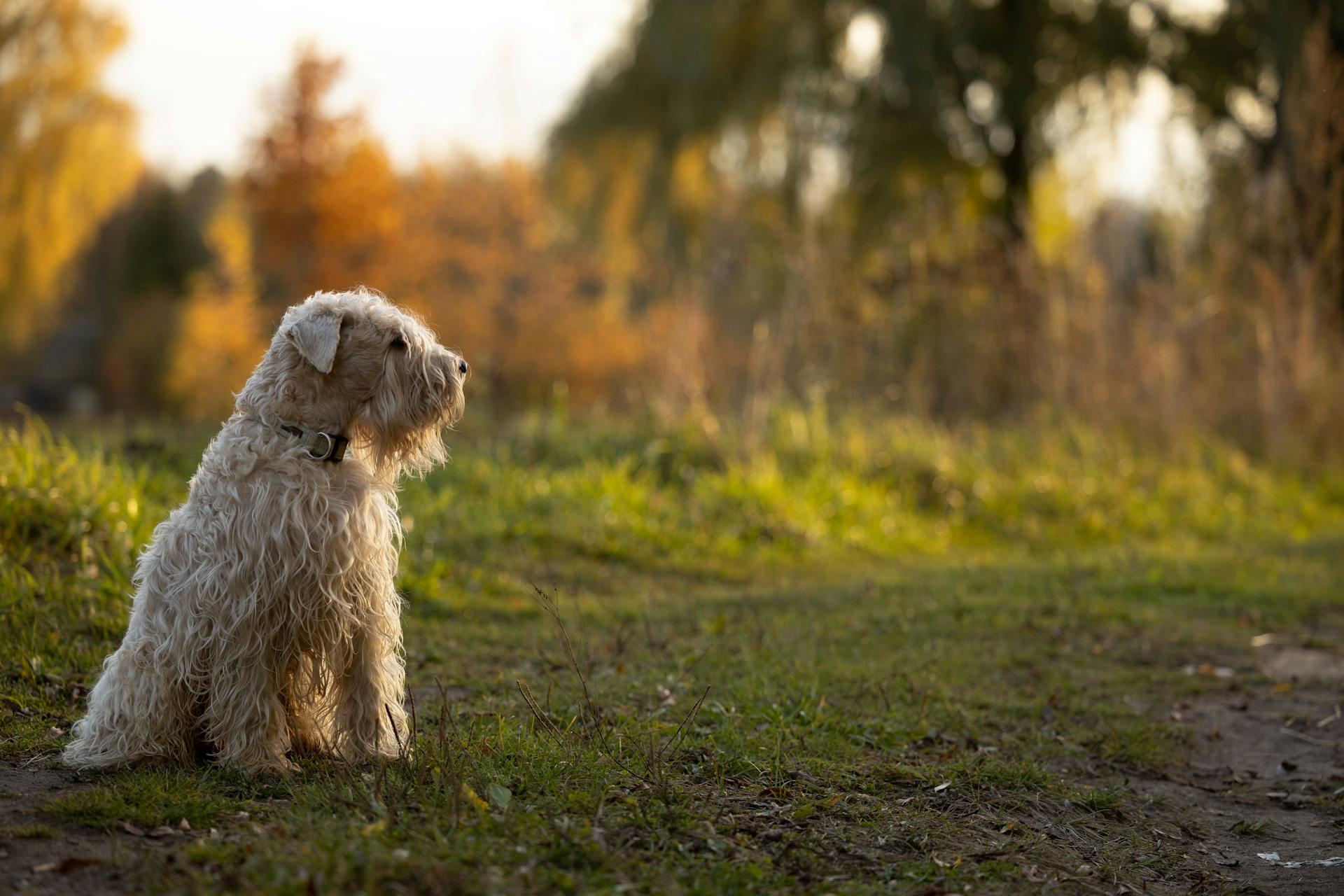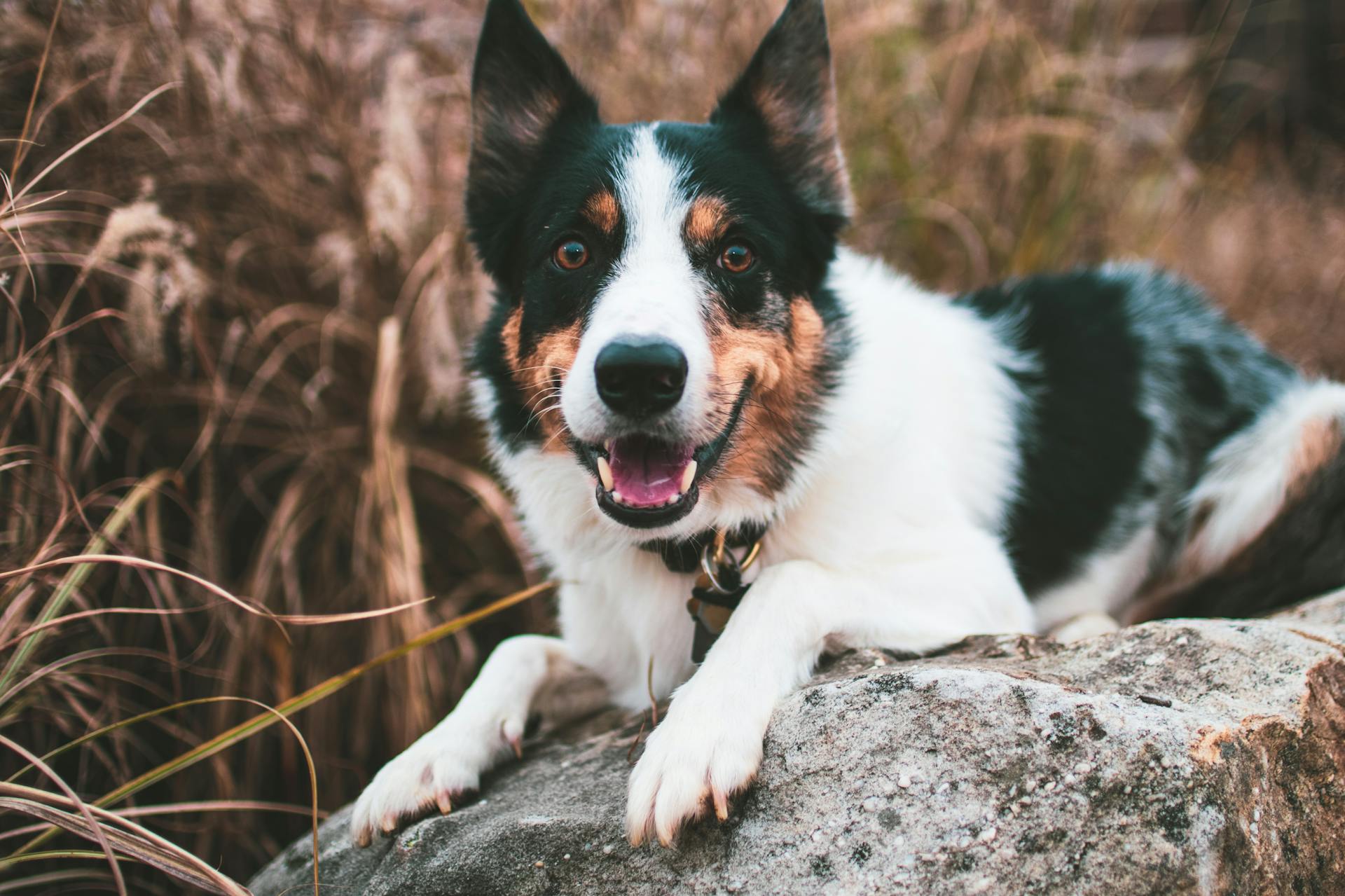
Raising a healthy Border Terrier litter requires attention to detail and a commitment to providing the best possible care.
Border Terriers are prone to hypoglycemia, so it's essential to ensure the puppies are nursing regularly and eating small, frequent meals until they're weaned.
A whelping box or safe area should be prepared in advance, with towels or blankets for bedding and easy cleaning.
Vital Stats
When considering bringing home a Border Terrier from our litter, you'll want to know what to expect in terms of their size - they're generally small to medium.
You can look forward to plenty of snuggles and playtime with these loving dogs, who are known for being smart and affectionate.
If you're an active family or individual, a Border Terrier is a great fit - they require at least one hour of exercise per day.
A well-groomed Border Terrier is a happy Border Terrier, so be prepared to spend some time each week brushing their double coat and hand-stripping it as needed.
With proper care, these dogs can live for 12 years or more.
As members of the Terrier breed group, they're known for being feisty and full of personality - but with patience and love, they'll grow into wonderful companions.
Temperament & Personality
Border Terriers are known for their plucky independence and tend to be self-assured, which can make them a little stubborn at times.
This self-assurance also means they're less prone to separation anxiety than other breeds, but it's essential to remember that they still need attention and interaction from their family.
As originally bred to work alongside horses and hounds, Border Terriers tend to get on well with people and animals alike, making them great family dogs for active households.
However, their high prey drive is something to consider, especially if you have cats or other small pets at home - they can be prone to chasing!
To introduce a new Border Terrier to your household, it's crucial to take extra care when meeting other animals, as they're unlikely to back down from a challenge.
One thing to keep in mind is that Border Terriers are very vocal and have a loud bark, so if you live in an apartment or have noise restrictions, this might be something to consider.
Training and Behavior
Training a Border Terrier puppy requires patience and consistency. They are quick learners but can be stubborn if training starts too late.
To keep your feisty Border on track, have a tasty low-calorie treat ready to bribe them into listening. Early socialisation is key to avoid unwanted behaviour like chasing and aggression that comes with their high prey drive.
Recall training needs extra attention as they tend to wander off due to their independent nature. Positive reinforcement works best for these sensitive dogs.
As they mature, adult Border Terriers need at least one hour of physical exercise daily. Mental stimulation is also crucial, so don't forget plenty of games and activities.
Don't underestimate the cunning of a Border Terrier - bred to escape from underground warrens, they require secure outdoor spaces to explore. They remain excitable well into their teens, demanding lots of attention and exercise.
To prevent dog aggression, start proper introductions early, ideally from 8 weeks old. If you feed dry kibble, try hiding meals across the garden for them to hunt out - it's a fun way to stimulate their hunting instincts.
For recall training, ball games are an excellent option as Border Terriers love chasing.
Nutrition and Care
Border Terrier litter owners need to pay close attention to their furry friends' food intake, as they can be quite greedy and tend to overeat.
Their high energy levels require a balanced diet that fuels their active lives without overfeeding, which is crucial for maintaining a healthy weight.
As Border Terriers are prone to developing diabetes, a careful feeding regime and regular exercise are essential to prevent this condition.
Switching food as your dog ages should be done gradually, with a feed that caters specifically to their unique needs.
Before Bringing Home a Pet
Border Terriers are cheeky, independent and extremely active little dogs that need at least one hour of exercise daily.
To make sure you're ready for this level of activity, consider your lifestyle and whether it can accommodate regular exercise sessions.
Remember to assess the temperament of the parents and what breeding lines they are from, as a puppy bred from showing stock might be calmer and easier to manage than one descended from working dogs.
If you have cats or other small animals at home, be aware that Border Terriers are natural hunters with a high prey drive and will instinctively chase them unless introduced carefully from a young age.
Here's what you need to know about providing for your pet's exercise needs:
- Large, secure space is essential for exercise.
- Lots of training is necessary to keep your Border Terrier engaged and well-behaved.
Health problems like epilepsy and otitis tend to be more common in Border Terriers, so it's crucial to choose a pet insurance policy that will cover the cost of any veterinary treatment they need.
Border Terrier History
The Border Terrier is a breed with an ancient and hardy lineage that dates back centuries. They were first bred along the Scottish-English border for the purpose of chasing foxes from underground lairs.
Their original job called for a small, fearless dog capable of intense bursts of energy, about 15 inches tall. To this day, they are known for their intelligence, self-direction, and tenacity.
Border Terriers were prized for their ability to disappear underground and conduct the pursuit of prey under their own initiative, beyond the reach of commands. They also show a surprising ability to leap high in the air and run very fast, considering their small size and short legs.
The exact origins and timeframe for the development of the Border Terrier as a distinct breed are a little hazy. However, it's clear that they originate from what was known as the 'border lands' or 'border country' that stretches for some distance on both sides of the Scottish/English border.
Here are the key characteristics that made Border Terriers successful working dogs:
- Intelligence
- Quickness
- Considerable stamina
- Small enough to follow a fox underground
- Able to get along with other dogs
- Responsive to its owner/handler
The breed standard for the Border Terrier emphasizes that every feature of the dog was specifically created through selective breeding and extensive use of the dogs in a working environment.
Physical Characteristics
Border terriers are smaller dogs when fully grown, weighing about 15 pounds and typically standing about 15 inches at the shoulder.
Their coats come in several colors, including wheaten and black-and-tan.
They have a slight snub to the nose, a short, powerful muzzle, an otter-shaped head, and triangular ears that fall beside the face.
Adult border terriers carry a soft downy undercoat covered by a wiry outer coat. The outer coat shows no kink or curl, and is dirt and water resistant, but requires frequent grooming.
Their tails are short and thick, with a stance that's alert and focused.
Fun Facts and Trivia
Border Terrier litters typically range from 2 to 10 puppies, with an average litter size of 5-7 dogs.
Puppies are usually born after a gestation period of about 60-65 days.
The first few weeks of life are crucial for socialization and bonding between the mother and her puppies.
Newborn Border Terrier puppies weigh around 6-12 ounces (170-340 grams) at birth.
Their eyes remain closed until they're around 14-21 days old, which is a pretty cool sight to see!
Border Terriers can have up to three litters in their lifetime, but this depends on various factors like breeding and health.
Current Status
The Border Terrier Club was established in 1920 and there are six more UK Border Terrier Clubs.
As of 2020, the Border Terrier is the second most popular terrier breed in the UK, after the Staffordshire Bull Terrier.
Fortunately, despite its popularity, the breed hasn't changed significantly since its inception.
Intriguing read: Norfolk Terrier Breeders Uk
Today's
Today's Border Terrier is a beloved breed that has gained popularity over the years. The breed was first established in 1920 with six UK clubs dedicated to its promotion.

The Border Terrier Club was one of the founding clubs, and it's heartening to see that the breed has maintained its integrity despite its growing popularity. In fact, as of 2020, the Border Terrier is the second most popular terrier breed in the UK.
One thing that sets the Border Terrier apart from other breeds is its versatility - it's a working dog that's also a happy and affectionate companion. This unique combination of traits has made it a favorite among many dog owners.
Here are some key statistics about the Border Terrier:
The Border Terrier's popularity peaked in 2008, but it remains a beloved breed among many dog enthusiasts. Its unique combination of traits and low maintenance needs make it an excellent choice for families and individuals alike.
In the US
In the US, only nineteen Border Terriers were exported prior to 1930, and the breed was slow to gain admirers.

The AKC formally recognized the Border Terrier in 1920, but it wasn't until twelve were registered in 1932 that things started to pick up.
Records show five Border Terriers were registered in 1930, none in 1931, and a significant jump to twelve in 1932.
Dr Merritt Pope, one of the founding members of the Border Terrier Club of America, led an effort to change the AKC's breed standard in 1950 to better reflect the breed's working conformation and characteristics.
The revised breed standard was approved by the AKC in March 1950 after four years of work by Dr Pope and other breeders.
Some influential Border Terrier foundation kennels in the US include Diehard Kennels, Balquhain Kennels, Dour Kennels, and Philabeg Kennels, which was founded by Dr Pope.
Later, kennels like Dalquest, Woodlawn, Bandersnatch, Shelburne, Trails End, and Mrs Marion duPont Scott's dogs played a significant role in the breed's development.
Local/regional Border Terrier Clubs across the US include the Border Terrier Club of the Redwoods, Oregon, Southern California, and Northeast.
See what others are reading: Pit Bull Terrier Kennels
Buying a Puppy
If you're considering buying a puppy from our border terrier litter, start by researching reputable breeders who prioritize the health and well-being of their dogs.
A responsible breeder will have done their homework on the parents' lineage and health clearances, ensuring they're not passing on any genetic issues to their puppies.
Border terriers are generally small in size, weighing between 10-15 pounds and standing about 11 inches tall at the shoulder.
Before bringing a new puppy home, make sure you have all necessary supplies, including food, water bowls, a crate, and plenty of toys to keep them entertained.
Sources
- https://www.petplan.co.uk/pet-information/dog/breed/border-terrier/
- https://www.petplace.com/article/dogs/breeds/border-terrier-puppies
- https://www.dogbreedinfo.com/borderterrier.htm
- https://www.scottish-at-heart.com/history-of-the-border-terrier.html
- http://thenorthernborderterrierclub.co.uk/buying-a-puppy/
Featured Images: pexels.com


